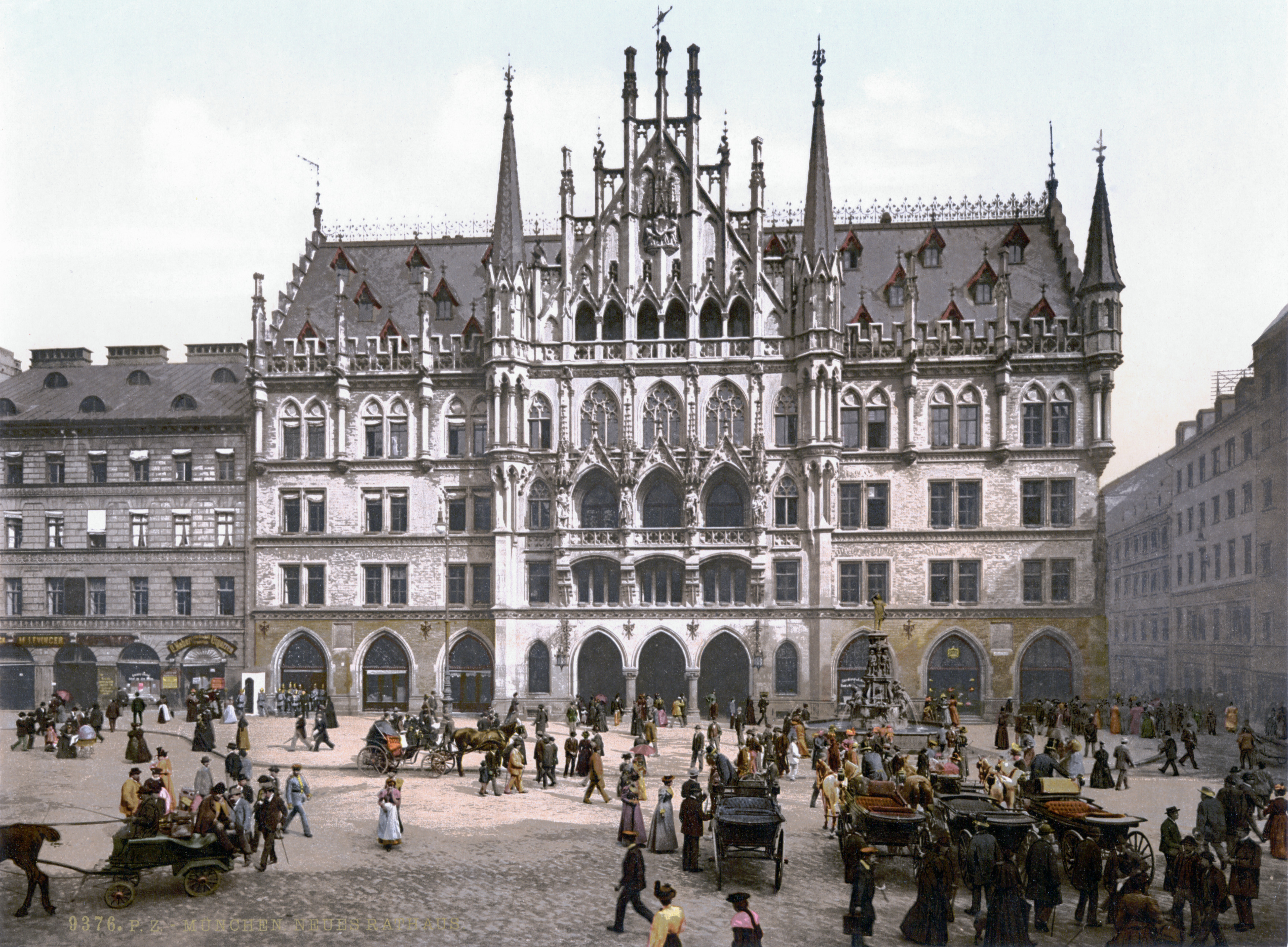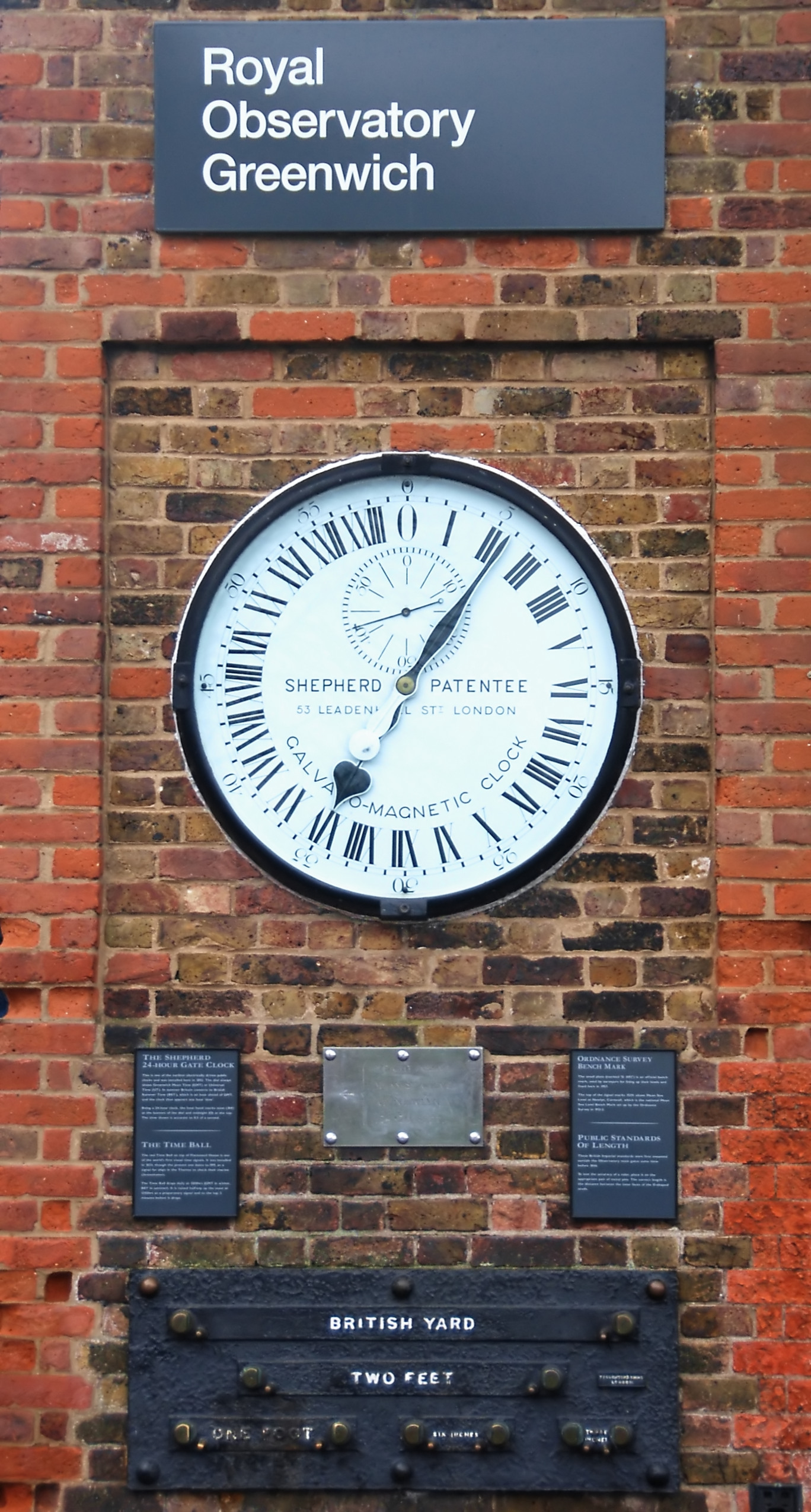|
Rathaus-Glockenspiel
The Rathaus-Glockenspiel in Munich is a tourist attraction clock in Marienplatz, the heart of Munich, Germany. History Part of the second construction phase of the New Town Hall, it dates from 1908. Every day at 11 a.m. and 12 p.m. (as well as 5 p.m. in the summer) it chimes and re-enacts two stories from the 16th century to the amusement of mass crowds of tourists and locals. It consists of 43 bells and 32 life-sized figures. The top half of the Glockenspiel tells the story of the marriage of the local Duke Wilhelm V (who also founded the noted Hofbräuhaus) to Renata of Lorraine. In honor of the happy couple there is a joust with life-sized knights on horseback representing Bavaria (in white and blue) and Lothringen (in red and white). The Bavarian knight wins every time, of course. This is then followed by the bottom half and second story: '' Schäfflertanz'' (the cooper Cooper, Cooper's, Coopers and similar may refer to: * Cooper (profession), a maker of wooden cas ... [...More Info...] [...Related Items...] OR: [Wikipedia] [Google] [Baidu] |
New Town Hall, Munich
The New Town Hall (German: ''Neues Rathaus'') is a town hall at the northern part of Marienplatz in Munich, Bavaria, Germany. It hosts the city government including the city council, offices of the mayors and a small portion of the administration. In 1874 the municipality had left the Old Town Hall for its new domicile. History Inception and construction The decision to construct a new building came due to the lack of space in the Old Town Hall and the adjoining, so-called "Lesser Town Hall" on Petersbergl (destroyed in 1944, not reconstructed). In memory of the bourgeois high season during the Gothic period, the choice fell upon a neo-Gothic design, which allowed an implement an independent architectural accent in contrast to the buildings of the royal family. The north side of the Marienplatz was chosen as the building site, where the house of the Landstände still stood which had been erected by the Bavarian Duke throughout the Middle Ages as a sort of representation of ... [...More Info...] [...Related Items...] OR: [Wikipedia] [Google] [Baidu] |
Munich
Munich ( ; german: München ; bar, Minga ) is the capital and most populous city of the German state of Bavaria. With a population of 1,558,395 inhabitants as of 31 July 2020, it is the third-largest city in Germany, after Berlin and Hamburg, and thus the largest which does not constitute its own state, as well as the 11th-largest city in the European Union. The city's metropolitan region is home to 6 million people. Straddling the banks of the River Isar (a tributary of the Danube) north of the Bavarian Alps, Munich is the seat of the Bavarian administrative region of Upper Bavaria, while being the most densely populated municipality in Germany (4,500 people per km2). Munich is the second-largest city in the Bavarian dialect area, after the Austrian capital of Vienna. The city was first mentioned in 1158. Catholic Munich strongly resisted the Reformation and was a political point of divergence during the resulting Thirty Years' War, but remained physicall ... [...More Info...] [...Related Items...] OR: [Wikipedia] [Google] [Baidu] |
Marienplatz
Marienplatz ( English: Mary's Square, i.e. St. Mary, Our Lady's Square) is a central square in the city centre of Munich, Germany. It has been the city's main square since 1158. History During the Middle Ages, markets and tournaments were held in the Marienplatz, which was originally called ''Markth'' ("market"), ''Schranne'' (" grain market") and later ''Schrannenplatz'' ("grain market square"). After said grain market was moved into the modern glass-and-iron Schranne near "Blumenstrasse" in 1853, the square received its new name, starting 9 October 1854. Architecture Marienplatz was named after the Mariensäule, a Marian column erected in its centre in 1638 to celebrate the end of Swedish occupation. Today the Marienplatz is dominated by the New City Hall (Neues Rathaus) on the north side, and the Old City Hall (Altes Rathaus, a reconstructed gothic council hall with a ballroom and tower) on the east side. The Glockenspiel in the tower of the new city hall was inspired ... [...More Info...] [...Related Items...] OR: [Wikipedia] [Google] [Baidu] |
Clock
A clock or a timepiece is a device used to measure and indicate time. The clock is one of the oldest human inventions, meeting the need to measure intervals of time shorter than the natural units such as the day, the lunar month and the year. Devices operating on several physical processes have been used over the millennia. Some predecessors to the modern clock may be considered as "clocks" that are based on movement in nature: A sundial shows the time by displaying the position of a shadow on a flat surface. There is a range of duration timers, a well-known example being the hourglass. Water clocks, along with the sundials, are possibly the oldest time-measuring instruments. A major advance occurred with the invention of the verge escapement, which made possible the first mechanical clocks around 1300 in Europe, which kept time with oscillating timekeepers like balance wheels., pp. 103–104., p. 31. Traditionally, in horology, the term ''clock'' was used for ... [...More Info...] [...Related Items...] OR: [Wikipedia] [Google] [Baidu] |
William V, Duke Of Bavaria
William V (29 September 1548 – 7 February 1626), called ''the Pious'', (German: ''Wilhelm V., der Fromme, Herzog von Bayern'') was Duke of Bavaria from 1579 to 1597. Education and early life William V was born in Landshut, the son of Albert V and Archduchess Anna of Austria. He received a Jesuit education and showed keen attachment to the Jesuit Counter Reformation tenets. His title 'the Pious' was given to him because he devoted his daily routine to masses (when possible, several times a day), prayer, contemplation, and devotional reading. He took part in public devotions, processions, and pilgrimages. William V's residence as crown prince was the ancient fortified Wittelsbach seat Trausnitz Castle, which he renovated extensively between 1568 and 1578. His projects, including the construction of an arcaded inner court, changed the Gothic castle into a Renaissance palace complex. Reign Like his Wittelsbach father and grandfather, William V was a strong supporter o ... [...More Info...] [...Related Items...] OR: [Wikipedia] [Google] [Baidu] |
Renata Of Lorraine
Renata of Lorraine or Renée de Lorraine (20 April 1544 – 22 May 1602) was by birth a member of the House of Lorraine and Duchess of Bavaria by marriage to William V, Duke of Bavaria. Born in Nancy, France, she was the second child and eldest daughter of Francis I, Duke of Lorraine and Christina of Denmark. Her paternal grandparents were Antoine, Duke of Lorraine and Renée of Bourbon-Montpensier and her maternal grandparents were Christian II of Denmark and Isabella of Austria. Life Renata was described as a beauty and a desirable match. In 1558, after the death of his first wife Prince William of Orange expressed a desire to marry Renata. Her mother, Christina, liked the idea, and it was further cemented after the Treaty of Cateau-Cambresis. This match was however prevented by King Philip of Spain. Christina declined the plan of Cardinal of Lorraine to arrange a marriage between Renata and the prince of Joinville, and also a match proposed by the Spanish king to marry Renat ... [...More Info...] [...Related Items...] OR: [Wikipedia] [Google] [Baidu] |
Bavaria
Bavaria ( ; ), officially the Free State of Bavaria (german: Freistaat Bayern, link=no ), is a state in the south-east of Germany. With an area of , Bavaria is the largest German state by land area, comprising roughly a fifth of the total land area of Germany. With over 13 million inhabitants, it is second in population only to North Rhine-Westphalia, but due to its large size its population density is below the German average. Bavaria's main cities are Munich (its capital and largest city and also the third largest city in Germany), Nuremberg, and Augsburg. The history of Bavaria includes its earliest settlement by Iron Age Celtic tribes, followed by the conquests of the Roman Empire in the 1st century BC, when the territory was incorporated into the provinces of Raetia and Noricum. It became the Duchy of Bavaria (a stem duchy) in the 6th century AD following the collapse of the Western Roman Empire. It was later incorporated into the Holy Roman Empire, ... [...More Info...] [...Related Items...] OR: [Wikipedia] [Google] [Baidu] |
Knight
A knight is a person granted an honorary title of knighthood by a head of state (including the Pope) or representative for service to the monarch, the church or the country, especially in a military capacity. Knighthood finds origins in the Greek '' hippeis'' and '' hoplite'' (ἱππεῖς) and Roman ''eques'' and '' centurion'' of classical antiquity. In the Early Middle Ages in Europe, knighthood was conferred upon mounted warriors. During the High Middle Ages, knighthood was considered a class of lower nobility. By the Late Middle Ages, the rank had become associated with the ideals of chivalry, a code of conduct for the perfect courtly Christian warrior. Often, a knight was a vassal who served as an elite fighter or a bodyguard for a lord, with payment in the form of land holdings. The lords trusted the knights, who were skilled in battle on horseback. Knighthood in the Middle Ages was closely linked with horsemanship (and especially the joust) from its origins ... [...More Info...] [...Related Items...] OR: [Wikipedia] [Google] [Baidu] |
Schäfflertanz
The Coopers' Dance (german: Schäfflertanz) is a guild dance of coopers originally started in Münich. Since early 1800s the custom spread via journeymen and it is now a common tradition over the Old Bavaria region. The dance was supposed to be held every seven years."Gründungsmythos der Schäffler: So wahr wie die offiziellen Abgaswerte der Autoindustrie" '' Sueddeutsche Zeitung'' ("Cooper's founding myth: As true as the official emissions values of the automotive industry"), February 19, 2017 History Early documented cases of are dated by ...[...More Info...] [...Related Items...] OR: [Wikipedia] [Google] [Baidu] |
Cooper (profession)
A cooper is a person trained to make wooden casks, barrels, vats, buckets, tubs, troughs and other similar containers from timber staves that were usually heated or steamed to make them pliable. Journeymen coopers also traditionally made wooden implements, such as rakes and wooden-bladed shovels. In addition to wood, other materials, such as iron, were used in the manufacturing process. The trade is the origin of the surname Cooper. Etymology The word "cooper" is derived from Middle Dutch or Middle Low German ''kūper'' 'cooper' from ''kūpe'' 'cask', in turn from Latin ''cupa'' 'tun, barrel'. Everything a cooper produces is referred to collectively as ''cooperage.'' A cask is any piece of cooperage containing a bouge, bilge, or bulge in the middle of the container. A barrel is a type of cask, so the terms "barrel-maker" and "barrel-making" refer to just one aspect of a cooper's work. The facility in which casks are made is also referred to as a cooperage. As a name In ... [...More Info...] [...Related Items...] OR: [Wikipedia] [Google] [Baidu] |




